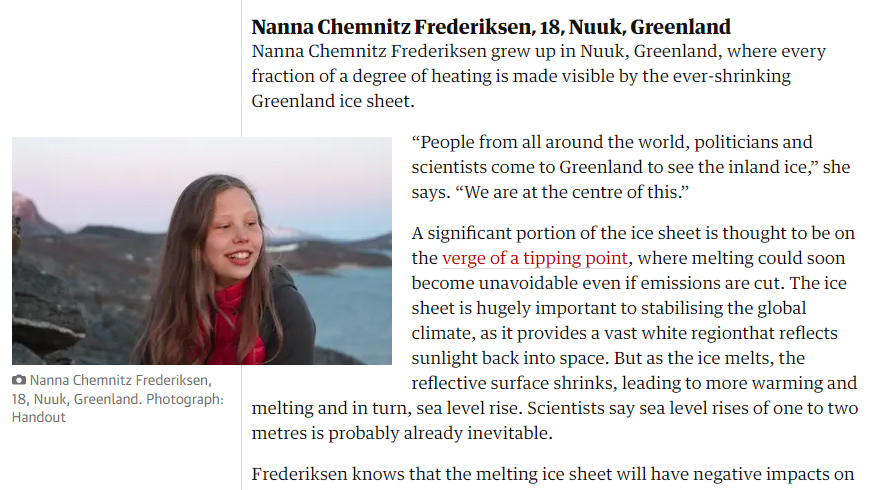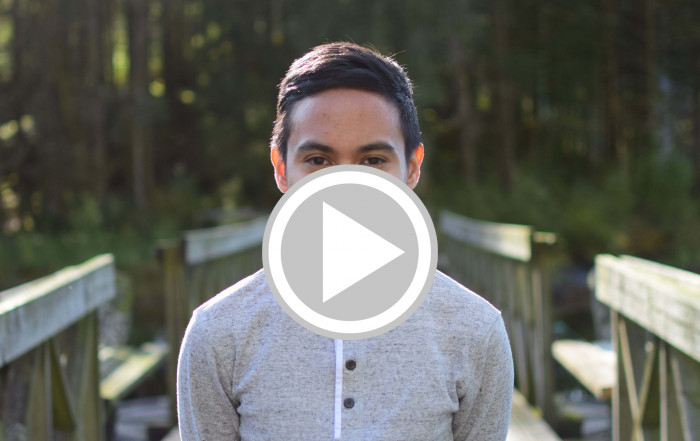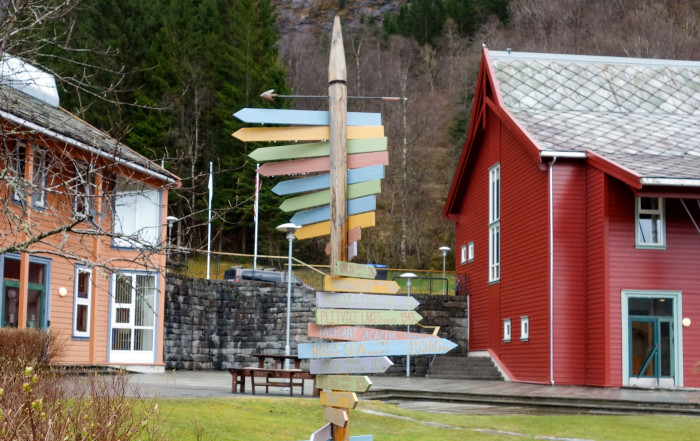“People from all around the world, politicians and scientists come to Greenland to see the inland ice,” she says. “We are at the centre of this.”
A significant portion of the ice sheet is thought to be on the verge of a tipping point, where melting could soon become unavoidable even if emissions are cut. The ice sheet is hugely important to stabilizing the global climate, as it provides a vast white region that reflects sunlight back into space. But as the ice melts, the reflective surface shrinks, leading to more warming and melting and in turn, sea level rise. Scientists say sea level rises of one to two metres is probably already inevitable.
Frederiksen knows that the melting ice sheet will have negative impacts on communities across Greenland, especially in northern settlements such as Qaanaaq where permafrost melting is destabilizing homes and roads and impacting how fishers and hunters operate.
But her real concern lies on the impact it will have globally. “I am not so scared of what the effects of the melting of ice in Greenland will be,” Frederiksen says, “It scares me what effect it can have for the rest of the world.”
Latest News
RCN students win prices in the Young Researchers final.
Congratulations to the three RCN students who won prices in the Young Researchers final. Our students won one first price and two third prices. It is with great pride that we received the [...]
Response to Covid-19
Like the rest of the world our school has been affected by Co-Vid19. Most students have left campus with around a quarter staying on. Even though we are spread around the world, we [...]
Geir Jørgen Bekkevold – New Chair of our Board
At the Council Meeting, hosted electronically this weekend, new Chairs were elected for our Board and Council. We are pleased to welcome Geir Jørgen Bekkevold as the new Chair of our Board. He [...]




